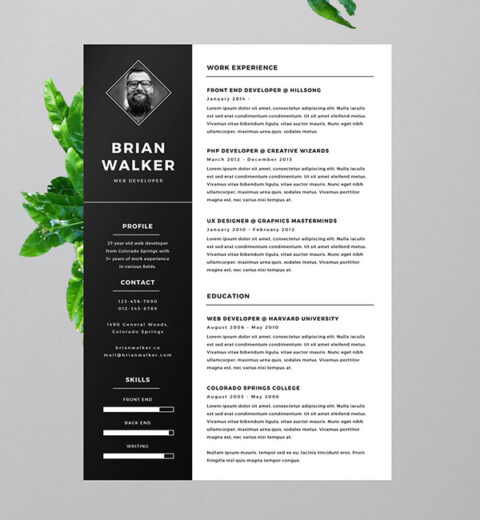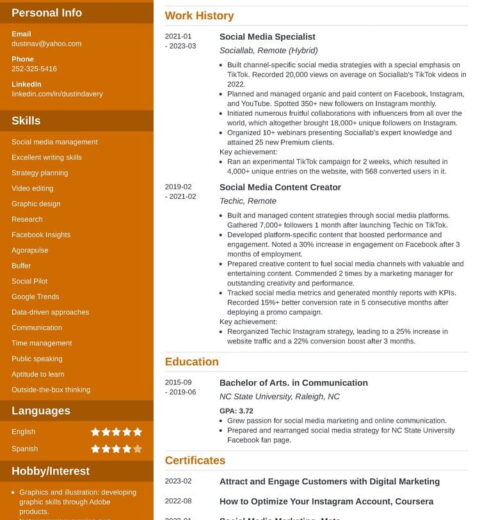When embarking on a job search, two critical documents dominate the landscape: the resume and the cover letter. These tools are fundamental in the quest for employment, yet many candidates underestimate their significance and often perplex the distinct roles they play in the hiring process. Understanding the nuances and synergies between a resume and a cover letter can not only enhance one’s chances of securing an interview but also convey a comprehensive narrative about the applicant’s professional trajectory.
A resume acts as a succinct summary of a candidate’s education, professional experience, skills, and accomplishments. It is, in essence, a marketing document, designed to promote oneself in an efficient yet effective manner. The typical resume is structured chronologically or functionally, often employing bulleted lists to present data in an easily digestible format. This allows hiring managers to swiftly grasp essential information—such as prior employment, educational background, and relevant skills—at a glance. Furthermore, the inclusion of quantitative achievements can evoke an immediate sense of competence. For instance, stating that one “increased sales by 20% in a single quarter” is more compelling than merely claiming to be a sales representative.
On the contrary, a cover letter complements the resume by providing a narrative context. It allows the candidate to convey their passion for the industry, articulate their motivations for applying, and elaborate on how their experiences align with the company’s objectives. A cover letter grants the opportunity to showcase one’s personality, offering a glimpse into one’s character beyond the facts and figures presented in a resume. This document serves as a medium for storytelling, where candidates can weave personal anecdotes that demonstrate their problem-solving abilities or team leadership. This unique platform fosters a connection with the hiring manager by elucidating why the candidate is not only qualified but also a cultural fit for the organization.
The interplay between the resume and cover letter is a dance of relevance and resonance. Both documents serve the fundamental purpose of gaining attention, yet they operate differently within this framework. The resume is methodical, laser-focused on qualifications and verifiable results, while the cover letter is emotive, inviting the reader to perceive the candidate beyond their paper qualifications. Candidates who master both forms effectively present a holistic representation of themselves, thereby situating themselves as formidable contenders in the job market.
Moreover, the societal norms surrounding hiring processes accentuate the importance of adhering to expected structures in both documents. A resume often follows a two-page guideline, while a cover letter typically spans no longer than a single page. Adhering to these conventions signals to employers that the candidate possesses an understanding of industry standards. Failing to observe such formats may inadvertently raise suspicions regarding a candidate’s professionalism or attention to detail. In a competitive job market, these seemingly trivial details can yield significant impacts.
A powerful aspect of both the resume and cover letter is customization. Generic templates may initially seem appealing due to their time efficiency, but an individualized approach can yield dividends. Tailoring a resume and cover letter to align with the specific role and organization demonstrates a candidate’s genuine interest and willingness to invest time in the application process. This customization can include integrating keywords from the job description into the resume or reflecting the organization’s core values and mission within the cover letter. Such alignment showcases a candidate’s diligence and strategic thinking—qualities every employer prizes.
Furthermore, the cover letter often acts as a platform for addressing any potential red flags in a candidate’s history. For instance, gaps in employment or a shift in career trajectory can be deftly explained in this narrative format. This opportunity to clarify potential concerns engages hiring managers in a constructive dialogue rather than leaving them to speculate. Thus, a cover letter can serve as an essential tool for risk mitigation in the hiring process, ensuring that candidates maintain agency over their narratives.
As technology advances, the roles of resumes and cover letters evolve. Nowadays, many employers utilize applicant tracking systems (ATS) to manage the influx of applications. Resumes must now be optimized for these systems, emphasizing keywords and avoiding graphics that may impede automated scanning. Understanding how ATS works can provide candidates with a strategic advantage, ensuring they pass the initial filtering stages. Unfortunately, while many are aware of ATS for resumes, fewer comprehend that cover letters also require similar considerations, albeit with a more human element. Adapting keywords in a cover letter while still maintaining a conversational tone is crucial.
The interdependence of resumes and cover letters delineates a symbiotic relationship in the job application process, with each document amplifying the other’s strengths. Crafting a polished resume is futile without a compelling cover letter to reinforce and elaborate on the candidate’s qualifications and aspirations. Conversely, a remarkable cover letter may only captivate if supported by a solid resume spotlighting tangible accomplishments.
The dichotomy between a resume and cover letter is emblematic of the larger narrative of job applications, illustrating the spectrum of professionalism from the analytical to the personal. This balancing act is a testament to one’s ability to present a multifaceted image to potential employers. In a job market that increasingly favors distinctiveness, the proper execution of both a resume and a cover letter forms the cornerstone of a successful job search, transforming a candidate’s potential into reality.




